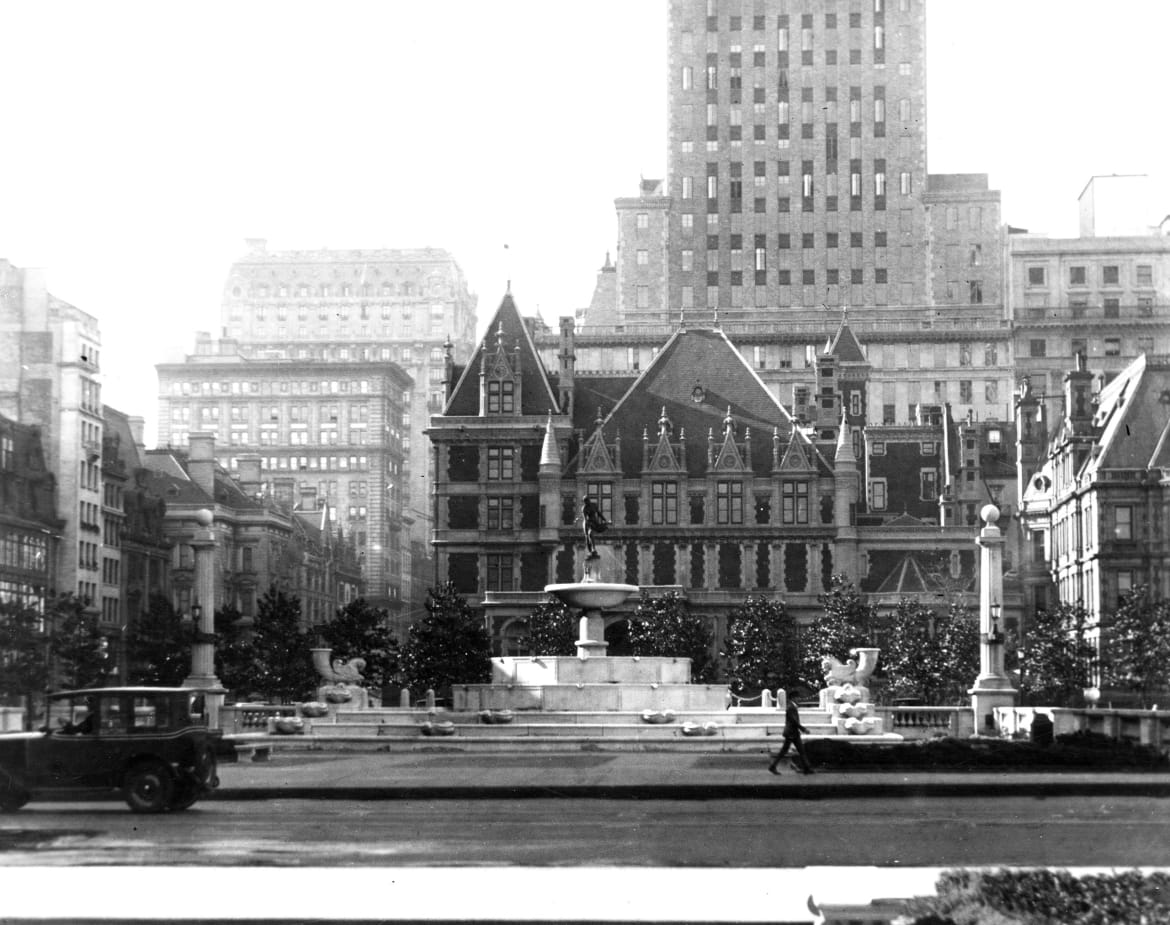In December 1878, The New York Times reported that the Vanderbilt of our concern—Cornelius II—had acquired two brownstones on the 57th to 58th Street block of Fifth Avenue for $225,000. He had been talking about building a new mansion and it was correctly speculated that this was a sign that his next big project had begun.
In 1882, the new Vanderbilt mansion was complete. It was fabulous, if modestly in line with the grandeur of the other mansions of the area. The outside was a distinctive red brick and limestone and it had already begun to have all the trappings of a French chateau (think crenellations and battlements and chimneys).
Over the next decade, the house would host more than its fair share of socialites and important players from around the world. Alice entertained lavishly in her new home. There were reports of the overflowing audience at a performance by a young piano prodigy who “showed his usual impulsive appreciation” of the treasures and finery that he saw on a tour of the house given by the young Vanderbilt children. He “would have wandered through the large apartments all day without tiring had he not been obliged to carry out his part of the programme.”
There was breathless reporting on how Mrs. Vanderbilt had decorated her quarters with soft mood lighting and a vast array of exotic flowers draped around the stairway, woven up columns, decorating paintings, and displayed in “extensive and beautiful” floral arrangements in order to entertain a French delegation for a breakfast. And, of course, there were balls. For one soirée thrown for 250 guests in 1891, a tapestry was arranged to separate the vestibule where guests arrived from the main hallway. When each attendee was ready to make their entrance, the tapestry curtain would separate, and the honored guest would step through.
It was an impressive mansion where many visitors “oohed” and “ahed” over the decor and design. But when several different branches of your very rich family are all building their massive homes—or, rather, palaces—on the same street, you have to wonder, is yours impressive enough? The answer to that question for our Vanderbilts was a resounding “no.” Only seven years after they moved into their grand home, The New York Times was reporting that Vanderbilt had purchased two more brownstones on the same block so that he could expand the home that was “already a favorite for society people to visit.” He would eventually acquire and tear down five homes, and his mansion would end up stretching the entire city block.
According to the book Fortune’s Children written by a later Vanderbilt relative, it was “common belief that Alice Vanderbilt set out to dwarf her sister in law’s Fifth Avenue chateau, and dwarf it she did.” By early 1893, the renovations were in full swing. The Vanderbilts were eager for the expansion to be completed as quickly as possible, so they arranged for more than 600 workers to labor day and night on the site under the light of electric lightbulbs when necessary. The job was scheduled to be completed in 18 months, although Vanderbilt allowed a two-month extension. The talk of the town was all about the new mansion being built, but the Vanderbilts wanted to keep their plans a secret. So they erected a giant wall along Fifth Avenue to shield the progress of the workers from the prying eyes of passersby. Even with this privacy guard, it was clear a massive project was underway. In the end, two major walls of the home were completely removed to make way for the addition and the still-new interiors were gutted.
By the end of the year, the house was complete and the reveal was jaw-dropping. The New York Times weighed in with the judgement that “it is a structure that would command admiration in any land of palaces and castles grand, for in its design, its noble proportions, and its artistic finish it is, in reality, a palace.” (Read more.)
Share


















No comments:
Post a Comment